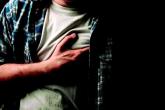News

Unnecessary stress tests in ED leading to overdiagnosis
Key clinical point: Guidelines for treatment of chest pain in low-risk patients in the emergency department may need revision, as noninvasive...
Mary Ann Moon, Family Practice News Digital Network
Key clinical point: The chance that chest pain signals a cardiac event is “exceedingly low” in ED patients who have negative serial biomarker results, nonconcerning vital signs, and nonischemic ECG findings.
Major finding: Only 4 of the 7,266 patients (0.06%) who presented with chest pain, tightness, burning, or pressure, and who had negative results on serial troponin testing, normal vital signs, and normal ECG findings, had a life-threatening cardiac event.
Data source: An analysis of the medical records of 45,416 adults admitted or observed for chest pain at three Midwestern hospitals during a 5-year period.
Disclosures: Dr. Weinstock had no relevant disclosures; two of his associates reported ties to AstraZeneca and Callibra.
The findings of Weinstock et al. are consistent with our own results from focus groups of internists and cardiologists: Physicians often anticipate they’ll regret missing a cardiac diagnosis and reflexively value taking some action over inaction, cognitive biases that ultimately lead to unnecessary testing and invasive treatment of patients with chest pain.
Dr. Rita Redberg |
For their part, patients also greatly overestimate the benefits of tests and treatments while greatly underestimating their risks. Given accurate and complete information about harms and benefits of certain interventions, many chest pain patients would make different choices.
Grace A. Lin, M.D., is in the department of medicine at the University of California, San Francisco, Philip R. Lee Institute for Health Policy Studies. Rita F. Redberg, M.D., is professor and director of women’s cardiovascular services at University of California, San Francisco, and is chief editor of JAMA Internal Medicine. Dr. Lin and Dr. Redberg reported having no financial conflicts of interest. They made these remarks in an editorial accompanying Dr. Weinstock’s report (JAMA Intern. Med. 2015 May 18 [doi:10.1001/jamainternmed.2015.1693]).
FROM JAMA INTERNAL MEDICINE
The chance that chest pain signals a cardiac event is “exceedingly low” – only 0.06% – in adults who have two negative results on troponin testing, nonconcerning vital signs, and nonischemic ECG findings in the emergency department, according to a report published online May 18 in JAMA Internal Medicine.
More than 7 million ED visits for chest pain occurred in the United States during the most recent year for which data are available, and only a tiny fraction of them were found to have a serious cardiac cause. Both inpatient admission and extended observation for these cases represent a considerable burden to the health care system and to the patient, who often is exposed to unnecessary testing, hospital-acquired infections, venous thromboembolism, pneumonia, falls, and other iatrogenic events, said Dr. Michael B. Weinstock of the department of emergency medicine, Ohio State University, Columbus, and his associates.
To quantify the incidence of truly life-threatening cardiac events among patients admitted or observed for chest pain, the researchers analyzed the medical records of 45,416 ED cases seen at three Midwestern hospitals during a 5-year period. Roughly half were admitted to an inpatient unit or an extended observation unit.
The study focused on the 7,266 patients who presented with chest pain, tightness, burning, or pressure, and who had negative results on serial troponin testing, normal vital signs, and normal ECG findings. Only four of these patients (0.06%) had a life-threatening outcome of interest: arrhythmia, ST-elevation myocardial infarction, cardiac or respiratory arrest, or death. Notably, one patient had a periprocedural MI and another had a STEMI during a stress test. A third patient, an 80-year-old man with coronary artery disease, hypertension, diabetes, obesity, chronic heart failure, chronic obstructive pulmonary disease, and renal failure, had noncardiac chest pain from massive GI bleeding secondary to warfarin coagulopathy. And a woman with hypertension, CAD, and a coronary artery bypass graft developed bradyasystolic cardiac arrest when given nitroglycerin, the investigators said (JAMA Intern. Med. 2015 May 18 [doi:10.1001/jamainternmed.2015.1674]).
“Our findings support the notion that adverse iatrogenic events as a result of admission may eclipse potential benefits” in chest pain patients who are at low risk for a cardiac event. “We believe that current recommendations to admit, observe, or perform provocative testing routinely on patients after an ED evaluation for chest pain has negative findings should be reconsidered,” they said.

Key clinical point: Guidelines for treatment of chest pain in low-risk patients in the emergency department may need revision, as noninvasive...
